Experiments show how exploding balloons and unexpected applications
In your opinion, how many ways will balloons fly?
Many of us must have experienced the feeling of "heartbeat" when the balloons holding hands suddenly exploded.
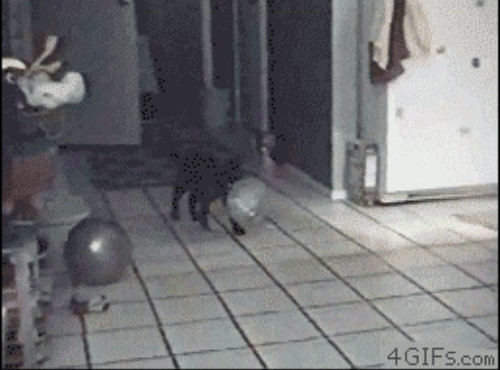
Startled .
Ignoring the story of feeling and noise, do you know what it looks like when balloons explode? Experiments of Mokhtar Adda-Bedia and Sebastien Moulinet of Paris Diderot University will tell you this.
According to Mokhtar's experiment, the ball will explode in two ways depending on the tension of the ball.
First, consider the case of low tension. When the ball is breathed in, the air will create even tension on each area of the balloon. If the tension at this time is not enough to cause the ball to burst, the ball will break in a long way as shown in the picture below.
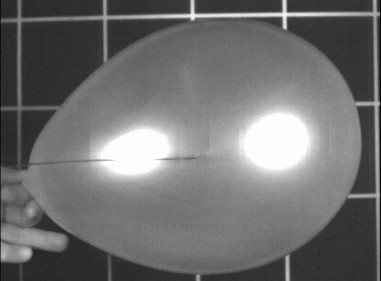
From another perspective:
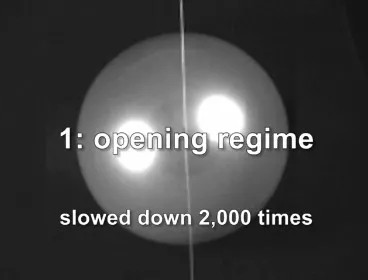
However, when the air is pumped in too much - in other words the ball has reached its limit of tension, the ball will burst according to another pattern when punctured.
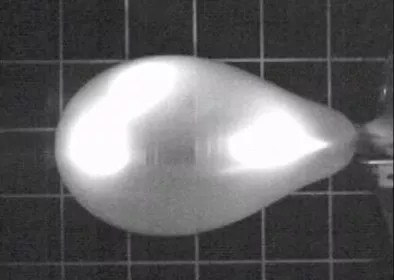
Or it looks like this:
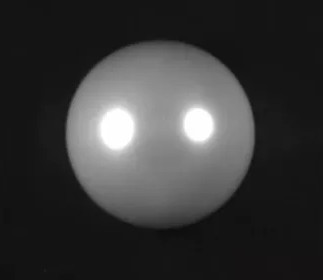
We can see that when the limit is reached, there will be many tears appear on the ball, making the ball seem to crumble.
Explaining this phenomenon, the two scientists knew it was related to the rate of sound propagation in the material . When the ball reaches its limit, this means that the tearing speed will reach the maximum. However, this speed cannot exceed the speed of sound transmission in rubber - about 570m / s.
Moulinet said: "If the speed of the tear exceeds the speed of sound, the material will not react in time when the tear appears - that is, it is not timely to adjust the pressure and physical properties. , it will break in a single line. "
Meanwhile if the tension is not enough, the speed of sound transmission in the ball will not reach the maximum speed, so the speed of the tear may exceed the speed of sound.

Glass doors may not crack like this in the future.
This means that if you adjust the sound propagation velocity in the material, you can adjust the tear so that it is more secure, not only for bubbles, but also for glass or metal - those The material has very high sound velocity.
Scientists hope that this finding could help create new materials that don't crumble when exposed to unexpected effects.
The following video will help you better understand this experiment:
- Burns from balloons exploded - explaining phenomena
- Galaxy explosion warning prone to burns, China has to recall
- Video: Simple test with balloons breaking the laws of physics
- Why does the balloon explode?
- 5 unique experiments in cold weather
- The most gruesome human experiments in history
- Many children are sucking the poison into their mouths
- European children will no longer be able to blow balloons
- Try 'brainstorming' with interesting psychological experiments
- 'Magic tricks' explodes balloons with orange peels
- Ways of 'comforting' the dangers of young people in the 19th century
- The mysterious cases of tooth exploding in history
 'Fine laughs' - Scary and painful torture in ancient times
'Fine laughs' - Scary and painful torture in ancient times The sequence of numbers 142857 of the Egyptian pyramids is known as the strangest number in the world - Why?
The sequence of numbers 142857 of the Egyptian pyramids is known as the strangest number in the world - Why? History of the iron
History of the iron What is alum?
What is alum? Explore the structure and operating principles of ball mills
Explore the structure and operating principles of ball mills  19th century rolling ball chronometer
19th century rolling ball chronometer  Baseball physics: Measure drag, ball direction, speed,... with wind tunnels to lasers
Baseball physics: Measure drag, ball direction, speed,... with wind tunnels to lasers  Stunned by parrot's ability to play golf
Stunned by parrot's ability to play golf  Records of ball lightning hitting England 800 years ago
Records of ball lightning hitting England 800 years ago  Dogs recognize when 3D objects violate Newton's laws of physics
Dogs recognize when 3D objects violate Newton's laws of physics 